China # 7 – Gashun Gobi Desert to Dunhuang’s famous Mogao Caves – September 2014
Leaving the oasis of Turpan, we were back on the seemingly endless and quite boring toll highway along the northern edge of the Taklamakan desert. It felt like driving across Nevada. By late afternoon I was falling asleep. Then we saw it, an actual break in the fences and guardrails into the black rock desert of the southern Gashun Gobi Desert. An area, 1,295,000 km2, (500,000 mi²), it is the fifth-largest desert in the world, stretching over 1,600 km (1,000 mi) from southwest to northeast and 800 km (500 mi) from north to south. Once an ancient inland sea, water now is almost nonexistent. Most of the topsoil has been blown away by the prevailing northwestern winds, leaving rocky mountains and stony plains devoid of vegetation.
Gashun Gobi Desert
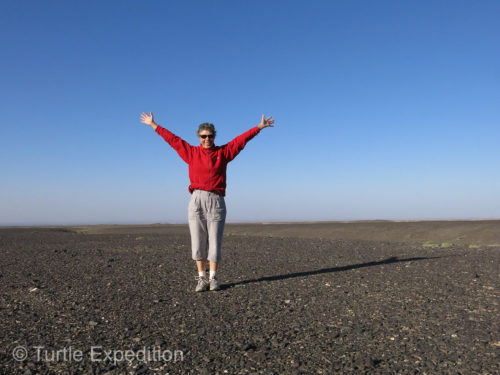
This part of the treacherous Gashun Gobi Desert was one of our most memorable camps in China. Photo by Zhang Zhi Qiong aka Green
Seeing this break in the fence, we switched from highway to “off road” and drove about half a mile onto a flat plain of clean black gravel. We could see the curvature of the earth. Wild camping doesn’t get any better than this. It was magical. Green set up her cozy MSR tent and we prepared a great dinner. No sound of any kind and no light except for the stars and nearly a full Harvest moon. Green broke out some very special “moon cakes” to celebrate the beginning of the Chinese Moon Festival.
With an early start in the morning—we really could have stayed longer—we headed back on the endless highway and made a quick fuel stop. There were no “four star tourist toilets”, so we were introduced to the normal road stop commodes, always a bit shocking; basically filthy pits and holes in a cement floor if travelers made it that far. Even Green was a little disgusted.
Dunhuang, Gansu Province
By evening we had maneuvered into the pretty oasis city of Dunhuang, for centuries an important commercial center along the Silk Road and today, famous for its night market. After getting Green settled in a hotel where we could park for the night, we headed for the market which had a great food court. The market itself, geared mostly to Chinese tourists, was fun to wander through and we couldn’t resist buying a tiny souvenir.
Mogao Caves – Caves of the Thousand Buddhas
In the morning, we slipped out of the city to visited the famous Mogao Caves, also known as the Caves of the Thousand Buddhas. Carved into the cliffs above the Dachuan River, they comprise the largest, most richly endowed, and longest used treasure house of Buddhist art in the world. They were first constructed in 366 AD and represent the greatest achievement of Buddhist art from the 4th to the 14th century. Situated at a strategic point along the Silk Route, at the crossroads of trade as well as religious, cultural and intellectual influences, the 492 cells and cave sanctuaries in Mogao are famous for their statues and wall paintings, spanning 1,000 years of Buddhist art. They have become one of the three most famous ancient Buddhist sculptural sites of China.
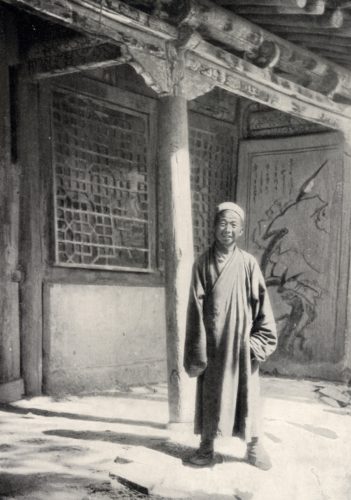
Taoist Abbot Wang Yuanlu discovered the Library Cave at the Mogao Caves Buddhist Center.
Photo 1900 (open source)
In 1900, the Taoist Abbot Wang Yuyanlu discovered a sealed cave (11th century) with up to 50,000 manuscripts in several ancient languages, now known as the Library Cave. The contents of the library were subsequently dispersed around the world and the largest collections are now found in Beijing, London, Paris and Berlin, and the International Dunhuang Project. It is one of the greatest treasure troves of ancient documents ever found. While early 20th century European explorers acquired many manuscripts, wall murals and other treasures for researchers, collectors and museums much to the chagrin of today’s China government but thanks to them, these precious historical documents were also saved as at that time, China showed no interest. Luckily, Mogao escaped any damage during the Cultural Revolution.
Not being Buddhist ourselves, we could only marvel at the caves and sculptures and the massive effort it has taken to restore them. Now we were looking forward to our next stop, the western end of The Great Wall of China.
- Back on the endless highway, only the road signs gave us a visual break.
- By late afternoon I was falling asleep. Where can we escape this monotonous highway and camp?
- Spotting a hole in the fences, we immediately turned off into the desert.
- We could see the curvature of the earth. It was magical. Wild camping doesn’t get any better than this.
- Not really sure if our Michelin XZL tires could safely glide over these little up thrusts of sharp shale.
- I think Green was happy to get off the highway!
- Green set up her cozy “green” MSR tent, www.msr.com, and she was home.
- Green had a great time snapping photos.
- Green proclaimed later that this was her most favorite camp on the whole trip.
- Folding up Green’s tent was a fast morning job.
- While the highway was boring, the road signs were very good.
- As we neared the city of Dunhuang the outskirts were full of burial mounds.
- A fast stop at a gas station gave us a shocking look at Chinese toilets, mostly just a trench with an adjoining open trench in the back.
- Squat holes got some privacy between short walls, but where do you place your feet? People were not very good shots.
- It looked like some folks didn’t even make it inside the bathroom, to use the term loosely.
- Remember the “no diaper” custom? If there is not bathroom just use the sidewalk. Watch where you step.
- Our hotel “room” in Dunhuang was quiet and guarded, but maybe a little tight.
- Green checks the menu. Sorry, no English.
- Looks like she made a good choice.
- The Dunhuang Night Market was geared towards Chinese tourists.
- There were lot’s of nuts and dried fruit available. They may be cheaper here than in other parts of China.
- This young man was quite the miniature painting artist.
- Unique art but nothing we wanted to bring home.
- This lady was happy to show off her various decorated gourds.
- Dunhuang was a very beautiful city at night with a relaxing promenade along the Danghe river.
- For centuries, Dunhang has been the commercial center along the Silk Road located near the Mogao Caves.
- Murals and light displays reminded the visitor of the importance Dunhuang played along the ancient Silk Road.
- Melons were in season and drying them was a good way to preserve their value if they could not be sold ripe out of the fields.
- The Dachuan River created an oasis in the middle of the desert which supported the Mogao Caves religious communities over centuries.
- The Dachuan River passes by the cliffs of the once thriving Mogao Buddhist Community.
- Most of the Mogao caves were inaccessible to the public.
- The entrance to the Mogao Caves was impressive.
- Even the streetlights caught our attention.
- The flower beds in front of the caves were in full bloom.
- This lovely statue adorned the gardens.
- The Mogao Caves contain 492 cells and cave sanctuaries. They represent the greatest achievement of Buddhist art from the 4th to the 14th century – 1,000 years!
- Only a few caves are open to the public.
- We had to wait for an English speaking guide who brought us to some of the upper caves accessed by stairs and balconies.
- The restoration work done to bring the caves and buildings back to life was amazing.
- Some of the statues have survived the ages, hidden in these caves.
- These photos show some of the restoration work that has been done.
- Painstaking restoration work takes years to complete.
- Many of the murals had been painted with lead-based pigments and age had turned them black. Some have been restored.
- The cave of this laying Buddha was adorned with a thousand Buddha images on the walls and the ceiling.
- We preferred fresh ripe melons if we could find them.
- There were so many fresh melons. Green insisted we try some dried melons. They were quite tasty.
- A secondary road just beyond the 9-strand barbwire fence, but no way for us to escape.
- At times, we passed a windmill farm and power lines seemed to go from no where to no where…..
- Oh Boy! Another tollgate. Gave us a chance to take a break and see what our traffic was going to be like.



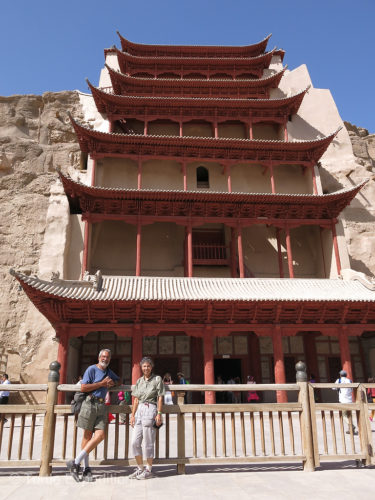
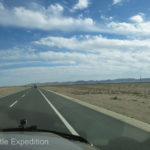
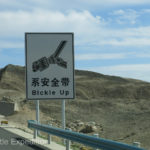
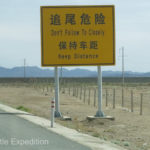
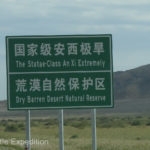
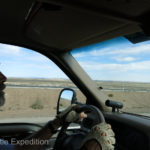
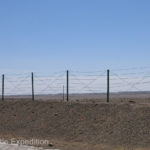
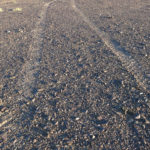

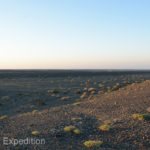
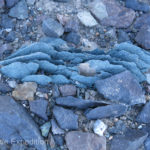
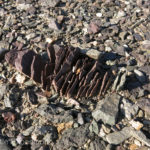





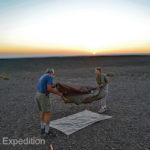
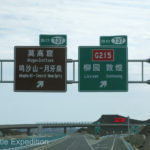
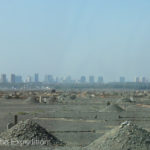
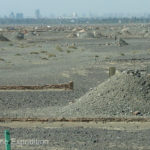
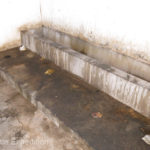
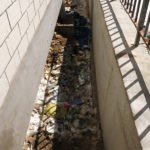
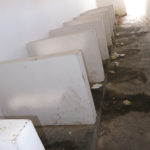
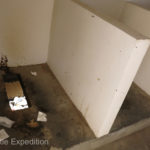
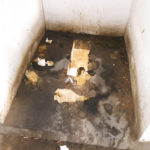
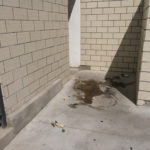

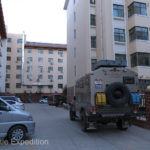


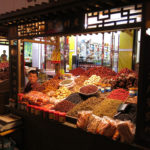
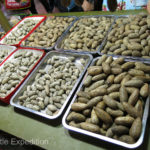
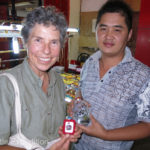
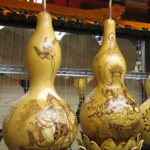
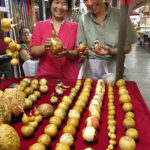
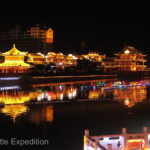
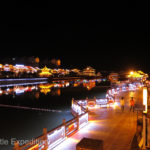
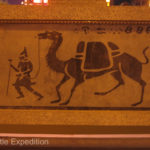
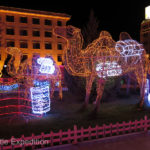
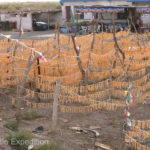
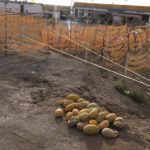
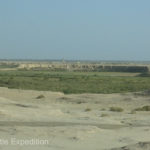
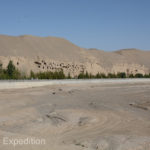
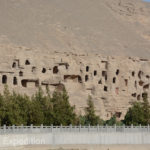
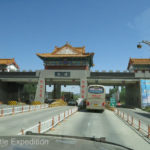
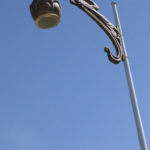
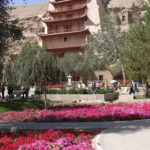
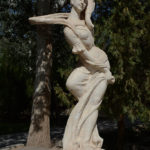
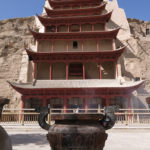
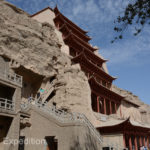
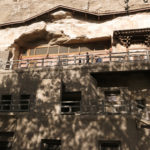
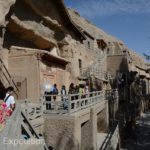
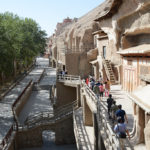
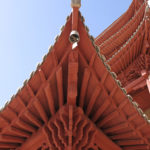
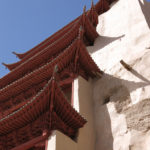
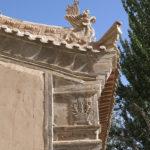
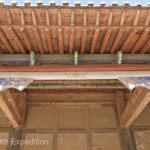
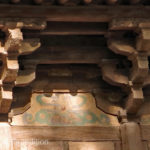
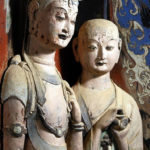
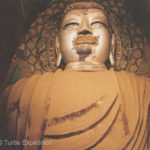
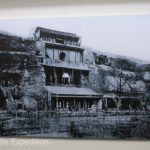
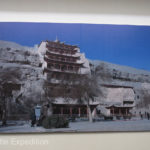
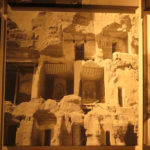
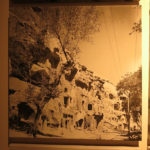
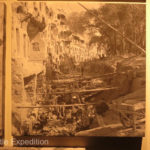
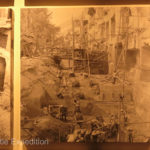
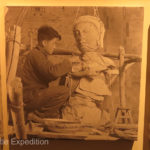
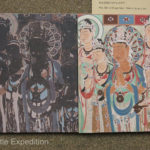
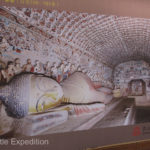
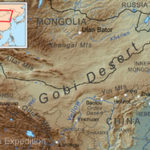

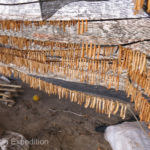
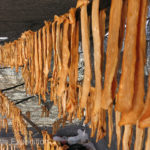
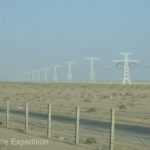

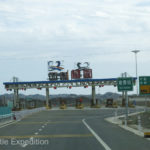
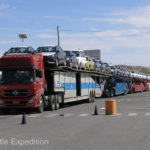





Always enjoy reading your posts. You must have written good notes to be able
to recall so much information!
Love to you!
Alice
I certainly recognize what foreign devils did to China during the era of foreign legations but after reading what the Boxers did to libraries, I would think that present day Chinese would be glad someone saw the value in those treasures.
On a different note though, I’ll bet that after Gary Dun Huang out over those filthy night soil pits he welcomed the modernity of the up-graded community of Dunhuang! Ted
BTW: If I get one of those advanced math questions will you grant me amnesty? Ted
Thanks Alice: Pictures bring back many memories.